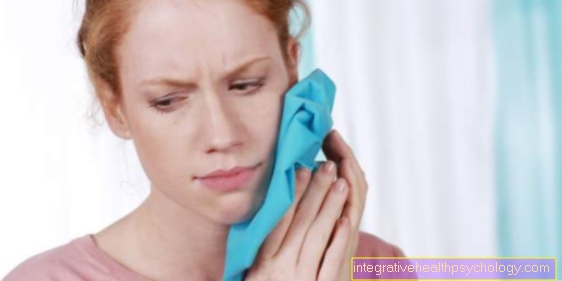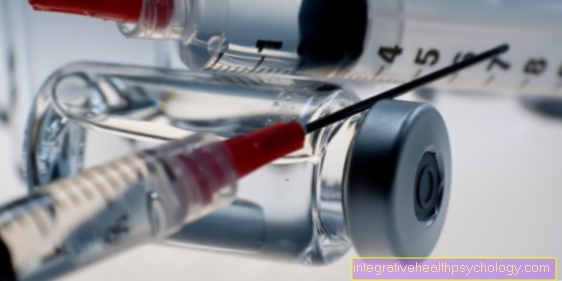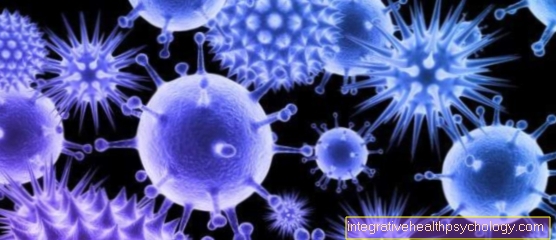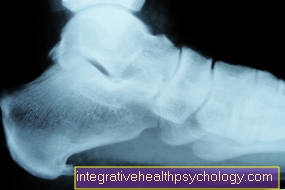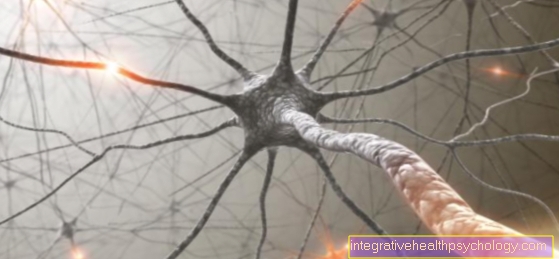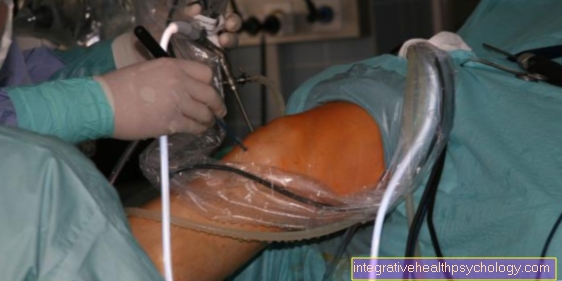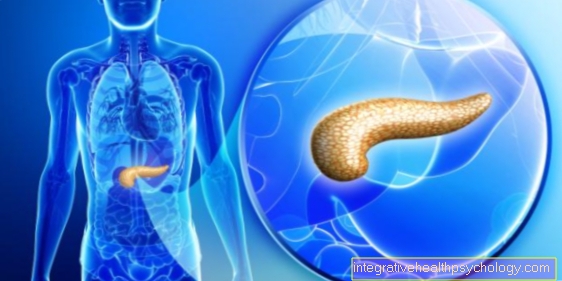Vaginal cramp
A vaginal spasm, which is also known as vaginismus in technical terms, is an involuntary cramping or tension of the pelvic floor and the vaginal muscles that make vaginal penetration impossible. This can be the insertion of a penis, a tampon or a gynecological examination at the gynecologist. The cause of the vaginal spasm is not defined, but can have both psychological and physical causes. An important characteristic, however, is that the woman has an express wish to enable penetration. The vaginal spasm is therefore not a conscious defense mechanism against an undesirable act.

Vaginal cramp is a sexual dysfunction. In the coding system for diagnoses (ICD-10), vaginal spasm is listed under the listing N94.-. This describes "pain and other conditions related to the female sexual organs and the menstrual cycle". Psychogenic vaginal spasm, also known as psychogenic vaginismus, is included in the category of F-diagnoses, which mainly contain psychiatric diagnoses.
causes
The causes of a vaginal spasm are very diverse. First of all, one has to distinguish between psychological and somatic causes. Furthermore, the distinction between primary and secondary vaginal spasm is common. In a primary vaginal spasm, inserting objects into the vagina was never painless. This form of vaginal spasm is usually diagnosed during puberty during the first gynecological examination.
Find out more about: Cramps in the abdomen
In the case of a secondary vaginal spasm, one assumes a triggering experience, for example a painful childbirth, a rape, but also painful sexual intercourse or a rough gynecological examination. However, vaginal cramps can also be caused by organic diseases such as endometriosis or an infection. These make the penetration very painful, which means that vaginal cramps can occur during future penetrations.
Read more on the topic: Endometriosis
diagnosis
The diagnosis of vaginal spasm is usually made by a gynecologist. In a gynecological examination, the doctor can first determine whether there is an organic cause behind the vaginal spasm. Endometriosis, for example, can be determined by taking a specific sample and analyzing the sample. Smearings can also help identify infections that may be the cause of a vaginal spasm. Apart from the physical cause, talking to the affected woman is very important in order to be able to diagnose a vaginal spasm. Questions about the first occurrence, triggering events, type of cramp, accompanying symptoms, possible fears and thoughts are important in order to identify possible causes.
Pain
Pain is usually the main symptom of vaginal spasm. The feeling of pain is always subjective and therefore differs among the women concerned. Some women feel pain during intercourse, while others feel pain when they insert a tampon or a finger. The impending penetration can already lead to pain for those affected, making penetration completely impossible. The pain can have a stabbing or burning character and vary in severity. The gynecological examination is also often made very difficult by the pain. When the pain occurs depends on the patient. For some women, any form of penetration is painful, for others only sexual intercourse or an examination by the gynecologist.
You might also be interested in this topic: Pain in the abdomen
Concomitant symptoms
Vaginal cramps can be associated with different symptoms. Often the attempt to penetrate the vagina is already associated with great pain. Should penetration nevertheless take place, it is usually painful as well. This is not only about vaginal intercourse, but also about inserting a tampon, gynecological examination or inserting a finger or other object.
Read more on the topic: Painful intercourse
Further symptoms can be fear and panic in the event of an imminent or performed penetration. These can also manifest themselves in physical symptoms such as palpitations, sweating or emotional symptoms such as crying. In women who have previously suffered trauma, such as rape, the penetration can cause a kind of flashback that puts the victim back in the situation of the trauma. This is found to be incredibly distressing.
Vaginal cramp during pregnancy
Vaginal cramps can also occur during pregnancy. Severe vaginal cramps in particular can be problematic at birth. The experiences with vaginal cramps during and before birth are not as great as they are with other gynecological diseases. Based on some studies, women with vaginal cramps are more likely to give birth in a caesarean section than women without vaginal cramps. Furthermore, vaginal cramps represent a hurdle for many women to get pregnant in the first place.
Many women go through fertility treatments until they become pregnant. Even during pregnancy, vaginal cramps can lead to increased maternal stress and fears before the birth. It is therefore advisable to seek specialist therapists who are experienced in treating pregnant women with vaginal cramps. Relaxation techniques or specialized therapies, pelvic floor training and biofeedback therapies can be an effective preparation for the birth.
Find out more about the topic: Lower abdominal pain during pregnancy
Duration
A vaginal spasm can be of varying duration. Vaginal cramps are usually brief events that subside as soon as penetration is stopped or has ended. A duration of a few minutes is very common. In very rare cases, vaginal cramps can last for a long time or occur in the middle of sexual intercourse. Here, too, relaxation techniques or a warm bath usually help to relieve the cramp. The cramps rarely last for hours and are therefore very stressful.
How can you resolve a vaginal spasm?
A vaginal spasm is very uncomfortable for the affected woman. It often leads to pain and uncomfortable feelings, such as fear and shame. If it happens during intercourse, it can be painful for the partner as well. What do you do if you have vaginal cramps? Anyone who generally suffers from vaginal cramps should consult a trusted gynecologist and calmly describe the problem. Many women are familiar with the same problems that no one should be ashamed of. Together with the gynecologist, causes can be identified and a treatment plan can be worked out.
You might also be interested in this topic: Gynecological check
In the acute situation of a vaginal spasm, you should first of all stay calm and try to breathe calmly. Mental as well as physical relaxation is very important so that the cramp can resolve. A warm bath or a light massage of the thighs or lower abdomen can also help to release the cramp and actively distract yourself from it. If the cramp occurs during intercourse, relaxation is also very important in this case. One should tell the partner clearly and without shame that the intercourse is painful and the vagina is cramped. Hugs and gentle handling can also help relieve the cramp here. Sexual intercourse should be stopped in this situation. If this is not possible and the partner is literally stuck, it makes most sense to call a doctor.
Magnesium for vaginal cramps
Magnesium is a mineral that also has important functions in the human body. A magnesium deficiency can lead to restlessness, muscle cramps and even cardiac arrhythmias. Therefore, recommendations for taking magnesium for vaginal cramps can often be found in forums. However, the effectiveness of magnesium in this case is highly questionable. Vaginal cramps are usually not treatable by taking magnesium, since a magnesium deficiency is very unlikely to be the cause. The causes are of a different nature and cannot be remedied simply by taking magnesium.
prevention
There is no real prevention or prophylaxis against vaginal cramps. Vaginal cramps are often the underlying cause. It doesn't always have to be severe, traumatic experiences like rape. Painful sexual intercourse or a rough gynecological examination can also trigger vaginal cramps. Of course, it is advisable to be careful with your own body and to clearly demand this from your partner, but the occurrence of a vaginal spasm cannot necessarily be prevented.
The influence that you can have yourself is also limited to organic causes, such as endometriosis or an infection. The best thing to do at an early stage is to talk about possible fears and complaints and take active action to prevent a chronic course. Many women are ashamed to talk to their gynecologist or their partner about the problem, which is why vaginal cramps occur over and over again. However, the sooner you address the problem, the sooner the condition can be improved.



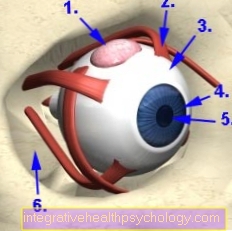
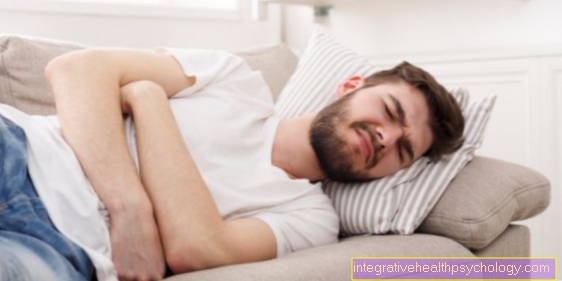



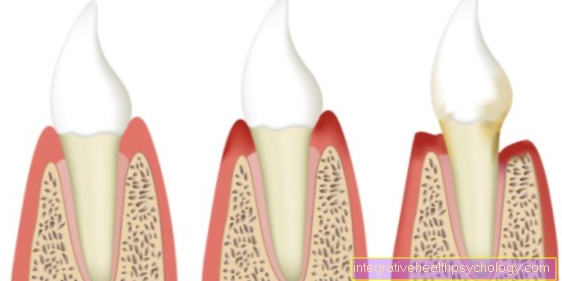


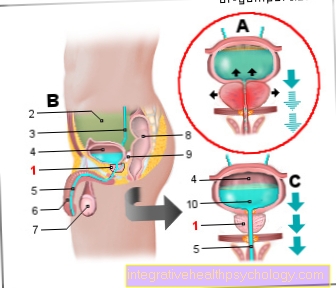
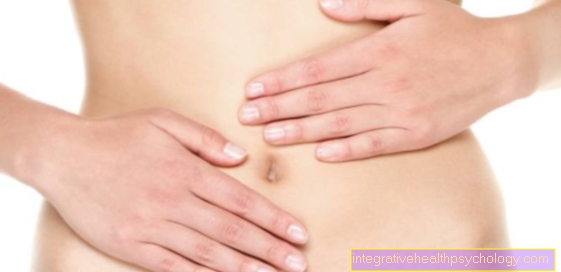
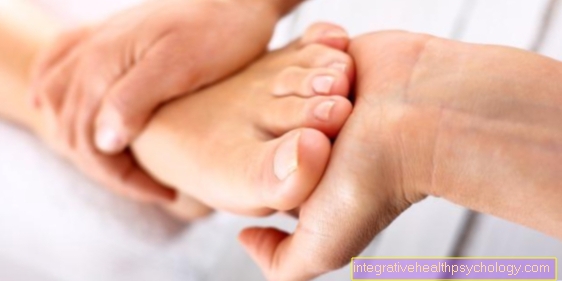

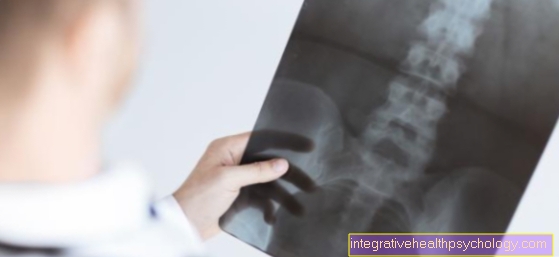


.jpg)

